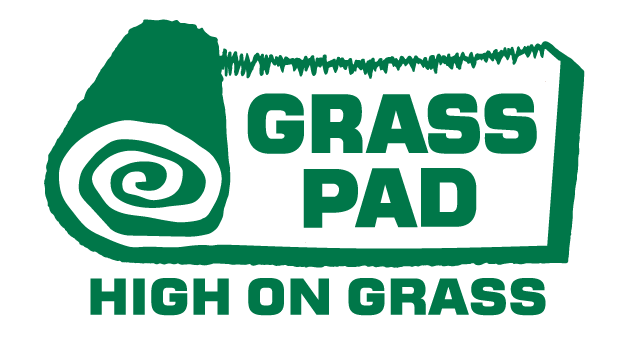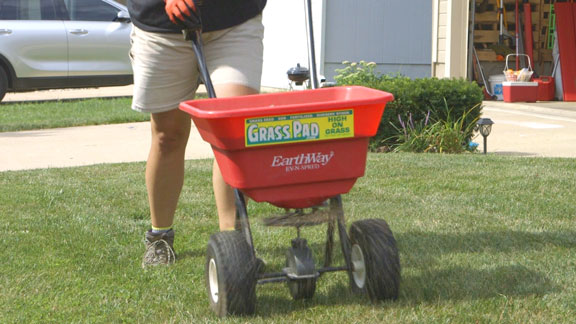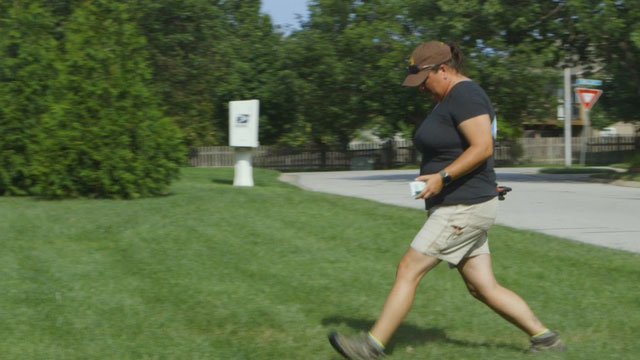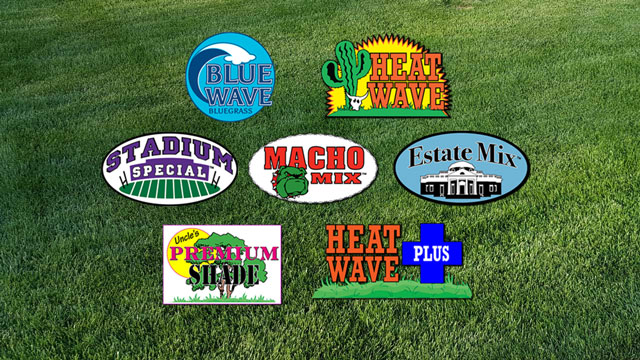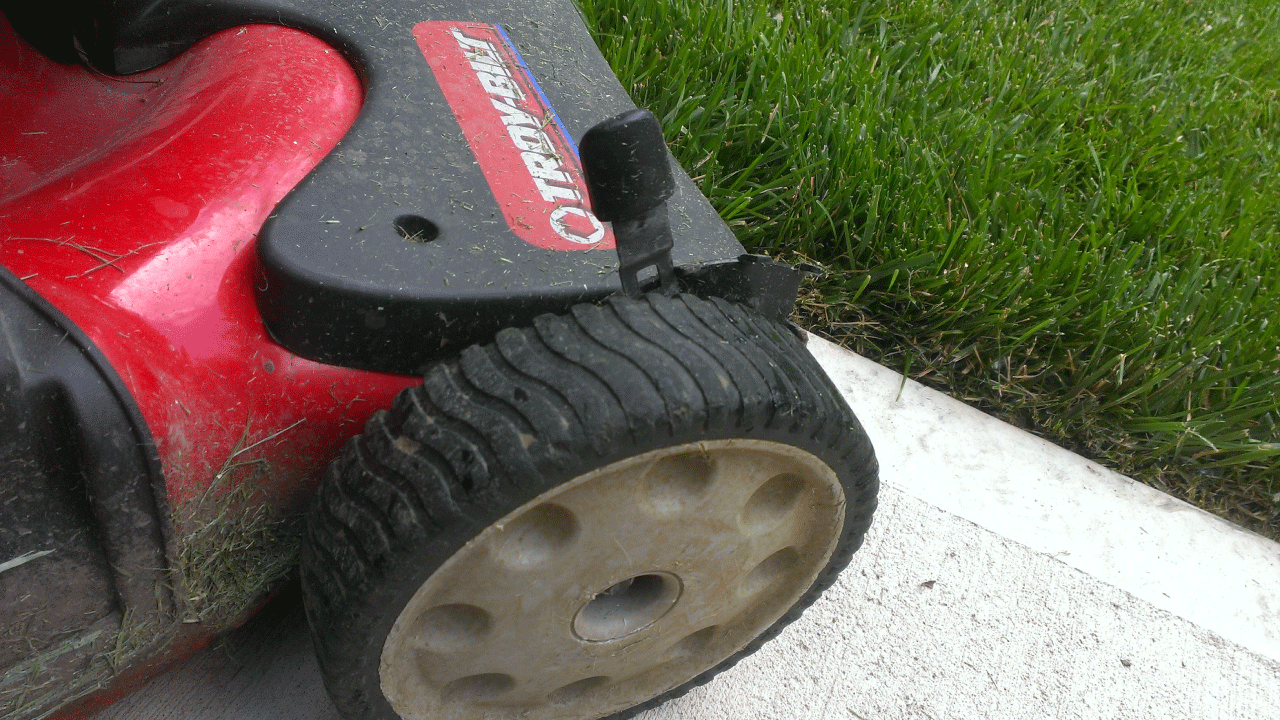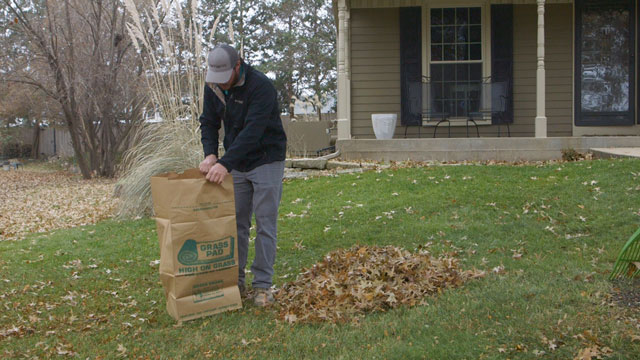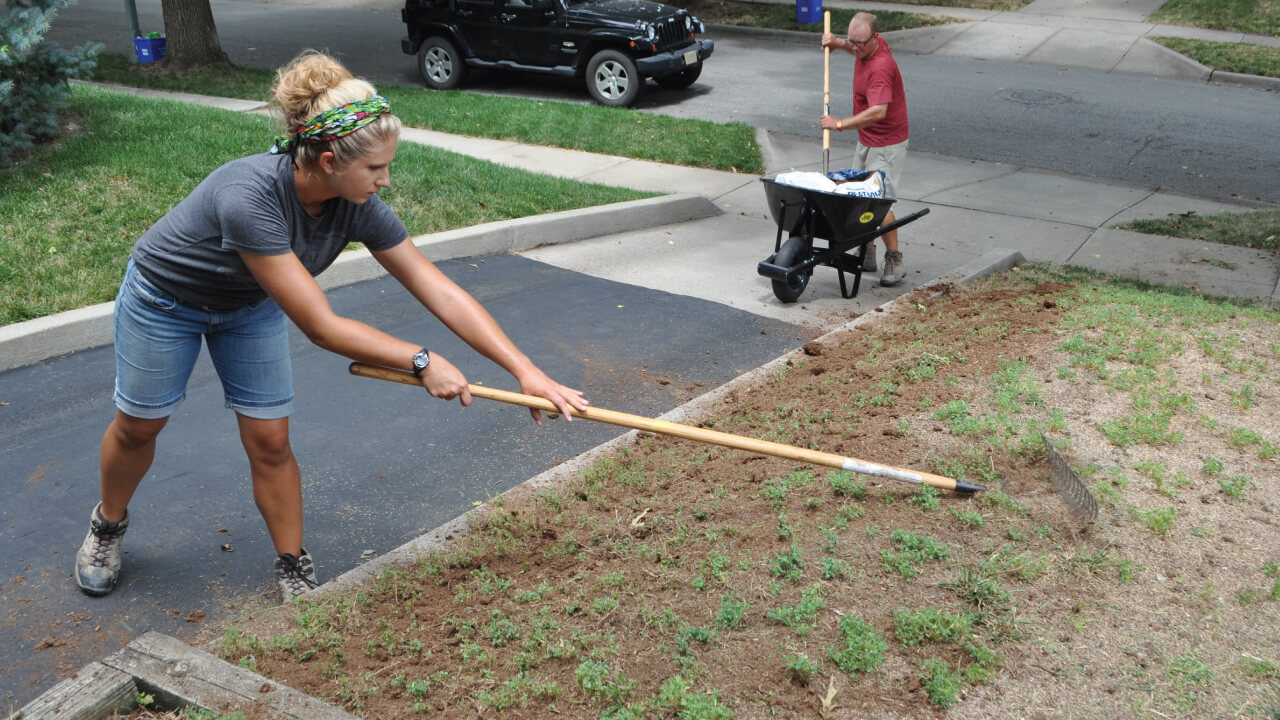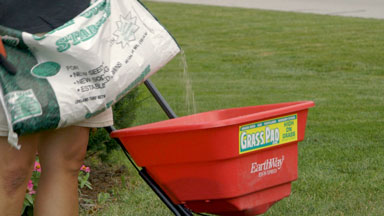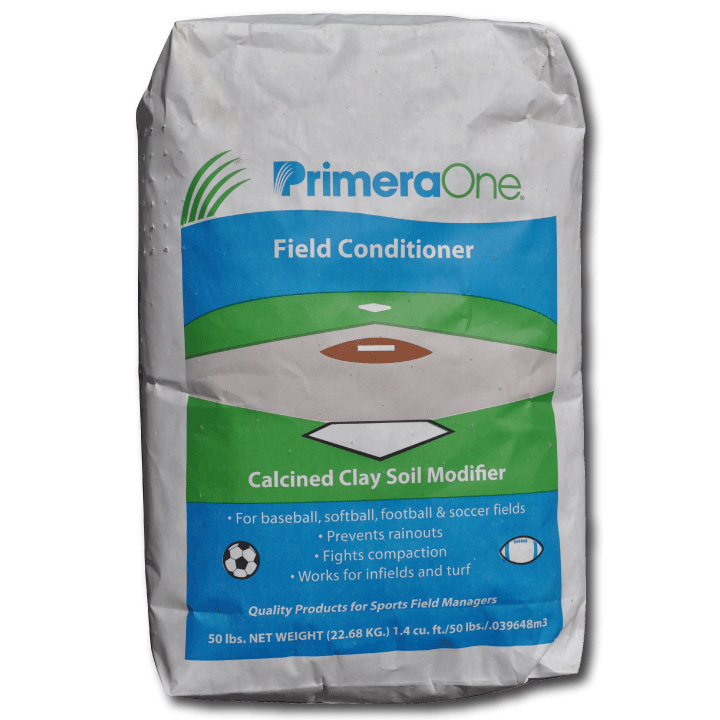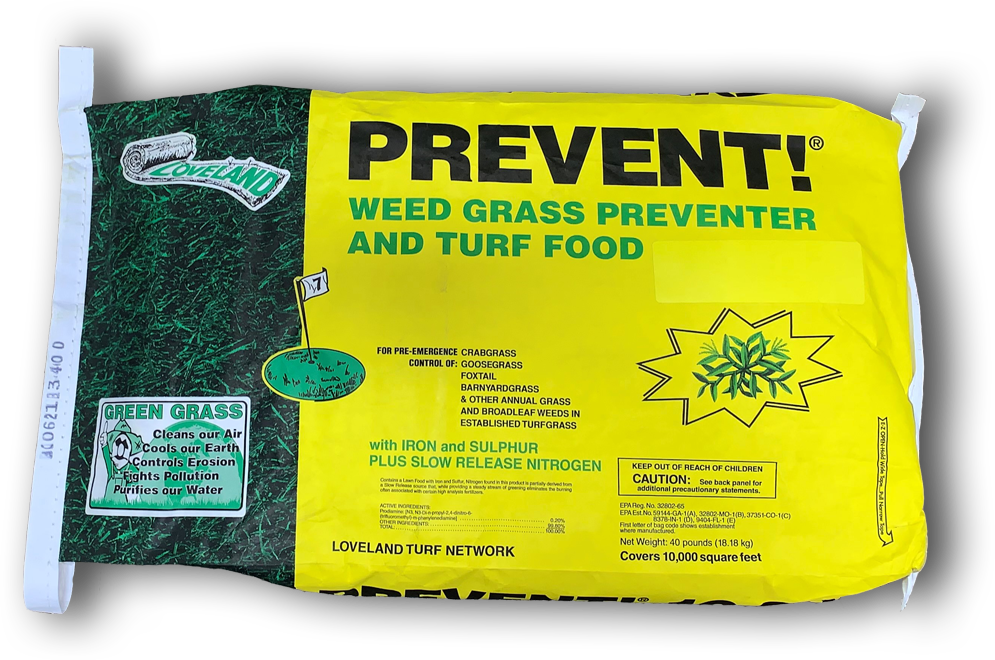Can You Overseed your Lawn in Spring and Keep out Crabgrass?
Yes, you can! However, overseeding lawns in spring can be challenging to keep out ugly crabgrass and foxtail. Loveland PREVENT, our most effective and longer-lasting crabgrass pre-emergent, cannot be used over new seeds because it will prevent good grass seeds from germinating. The same conflict occurs if you are dormant seeding. Grass Pad recommends following these idiot-proof steps when seeding your lawn in the spring.
Can I Plant Grass Seed Now?
Yes, today’s lawn problems need attention today. Sunny weekends in February and March can provide homeowners a chance to get a jump on spring overseeding projects. Grass seed sown the first week in March has a 10-week head start on the weed and insect season that begins mid-May.
If you have dormant seeded your yard this winter, begin at step #7.
Twelve Idiot-Proof Steps to Spring Overseeding
1. Why You Should Measure Your Lawn
It’s always important to know the size of your lawn area to calculate the correct amount of grass seed, and which size Idiot-Proof Lawn Program you will need for your home. Knowing your lawn size helps to avoid an over-application of fertilizer which may result in burning your lawn. You can use online apps to measure your property or walk it off and count your steps.
2. How to Pick the Right Seed
What are your expectations for your grass performance? What is most important to fit your needs? For example, do you need drought tolerance? Do you want traffic tolerance? Do you have full sun exposure, or is your lawn heavily shaded? You can find more information on which grasses perform the best for your conditions at this link, or come on down to the Grass Pad and talk to one of our green team grass seed experts.
3. Low Mowing Your Lawn
Prepare your lawn by mowing the grass one or two notches lower than your normal mowing height. Be careful not to scalp. The height of the cut for a low mow will be about 2.5-3 inches if you have fescue or bluegrass lawns. Mowing low will give the grass seeds the best chance to contact the soil.
4. Rake Up and Remove Loose Debris
Open the pathway for the seeds to hit the soil by removing loose debris from the areas you will be seeding. The grass seeds must be in contact with the ground for the best germination. (Using a bagging attachment to catch your lawn clippings will help remove most of the loose debris)
5. Scratch Up Any Bare Areas
If you have bare spots, lightly scratch the surface to improve seed-to-soil contact. Avoid using deep penetrating aerators in the spring. The freeze and thaw of winter soils are Mother Nature’s perfect soil aerator. Core aerators will bring weed seeds to the surface to germinate. Deep in the ground, those weed seeds would have remained dormant if left undisturbed. When spring seeding, aerating creates more weed problems than any benefit the machines will accomplish in spring soil.
6. Spread Your Weed-Free Grass Seed
Spread your Grass Pad weed-free grass seed with a rotary or hand-cranked “whirlwind” spreader. The seeding rates vary based on what type of seed you have chosen and your conditions. A good rule for overseeding is 5-10 lbs per 1,000 square feet for fescue seed and 2-4 lbs per 1,000 square feet for bluegrass.
Uncle’s Tip: Extra seed should be applied to bare ground areas, about double the overseeding rate. You can find more information on grass seeding rates at this link, or come on down to the Grass Pad and talk to one of our green team seed experts.
7. Feed the New Seed
Late February to mid-March – Bring the lawn out of dormancy and have nutrients readily available to young emerging grass plants by fertilizing the entire areas with Loveland Golf Course Starter or Renovator, which is the first step in the Seed Safe Lawn Program.
Remember: Grass seed and Prevent don’t go together.
8. Covering the Bare Spots
After applying the seed, cover any over-seeded bare spots with a light top dressing of sphagnum peat moss or Primera Sports Field Conditioner. Top dressings will act to hold moisture and absorb sunlight to promote quick germination of the seed.
Uncle’s Tip: Primera Field Conditioner is an excellent remedy for muddy and soggy areas around dog runs, porches and patios during the early spring thaw.
Topsoil, black peat, or straw are contaminated with weed seeds and are never recommended for seed cover.
9. Watering the New Grass Seed
During any extended periods of a spring drought, as weather conditions permit, drag your hose out and water seeded areas lightly, so the soil surface remains moist. Give special attention to repaired bare areas. Bare areas larger than a dinner plate can dry out quickly from the wind.
10. Mow as Needed
Mow the entire lawn as needed to maintain a height of around 3 inches. Mow with a sharp blade at a time when the grass is not wet. Avoid making aggressive turns in newly seeded areas. Mowing straight lines across areas that have been top-dressed will have minimal disturbance to grass seedlings. Do not let the grass get too tall between mowing. Routine mowing is beneficial for root growth on seedlings.
11. Seed Safe at Tax Day
Mid-April (Tax Day): Apply Seed Safe, a crabgrass pre-emergent that is safe to use when over-seeding. In addition, Seed Safe contains a seed starter fertilizer to get that new grass growing strong. Seed Safe remains working in the soil for about four weeks.
What is Seed Safe?
Seed Safe is a unique combination of seed-safe mesotrione crabgrass herbicide and a high-quality slow-release starter fertilizer to promote seedling establishment. Seed Safe is ideal for dormant seeding or spring lawn renovation to keep out ugly summer weeds like crabgrass and foxtail. However, the herbicide in Seed Safe has a short active life and will only be an effective pre-emergence for about four weeks.
Why Wait Until mid-April to Apply Seed Safe?
Annual grassy weeds, like crabgrass and foxtail, will not germinate until the soil temperature reaches 55°. Seed Safe, to be effective, must be activated and in the soil when weed seeds begin to sprout. The herbicide is worthless if the ground is too cold for the weed seeds to start growing. If used too early, the active ingredient in Seed Safe will break down and be ineffective against weeds when needed. Therefore, the herbicide (your money) will be wasted if applied too early. Historical data shows that mid-April is the ideal window here in the midwest to use Seed Safe.
12. PREVENT at Mother’s Day!
Mid-May (Mothers Day): Apply full-strength PREVENT crabgrass pre-emergent to all areas ONLY after those areas have filled in, and the new grass has matured and grown enough to have been mowed at least twice.
BE AWARE: PREVENT should not be used over areas where grass seed has not germinated. PREVENT will remain active in the soil for 8-10 weeks, preventing all grass seed & crabgrass seed from germinating.
Why Wait to Apply PREVENT?
Loveland PREVENT is not safe for new seeds. Loveland PREVENT will stop grassy weeds and all good grass seeds from germinating and can not be used during seeding. The new seeds must have time to mature and establish before using PREVENT. Because Loveland PREVENT has a much longer active life (about ten weeks), use Seed Safe first in mid-April, then apply Loveland PREVENT four weeks later to extend crabgrass control through the entire summer.
More Articles on Spring Overseeding
How to choose the right grass seed for your lawn.
- Here are some considerations when choosing the best grass seed type for your lawn. Learn more at this link.
Grass Seed Buyers Guide
- How to read a grass seed label and what you don’t want to see on the label. Learn more at this link.
Uncle’s Idiot-Proof Lawn Care Program
- Idiot-Proof lawn programs are designed for the busy homeowner. You can’t screw this up. Even your husband can do it. Learn more at this link.
Tips on growing grass in the shade.
- Five tips to improving growing conditions under shade trees. Learn more at this link.
Early Spring Lawn Care Tips
- When the sun is shining on a mild winter’s day, you can do plenty of things for the lawn. Learn more at this link.
